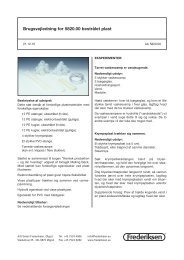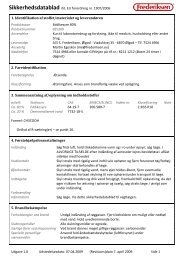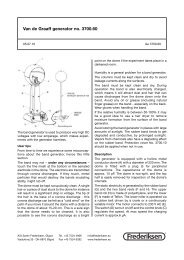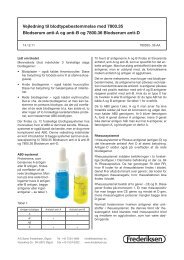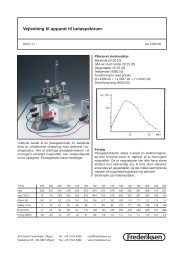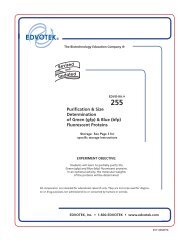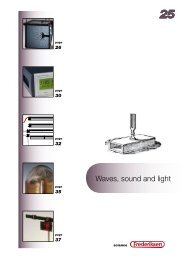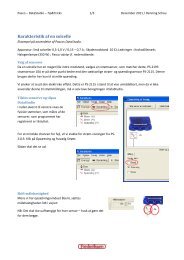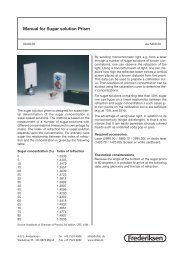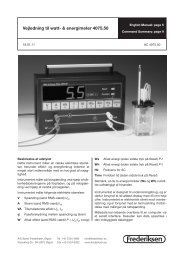218100 - Frederiksen
218100 - Frederiksen
218100 - Frederiksen
Create successful ePaper yourself
Turn your PDF publications into a flip-book with our unique Google optimized e-Paper software.
A bit of theoryWe will consider a rigid body as composed of a largenumber of small components.The moment of inertia of the body about a givenaxis is then given as a sum of contributions from theindividual components, each of the formThe large discs have the form of a cylinder with a cylindricalhole in the centre. The weights are attachedby a bolt which we can consider as a point mass.(Meaning that we ignore the bolt’s moment of inertiaabout its own centre – but not its mass.)Below are some formulae for moments of inertia.Rectangle with dimensions b x d and mass m:where m jis the mass of component no. j and r jis thedistance between this and the axis of rotation.The total moment of inertia can thus be written inthe formIn practice, moments of inertia are determined byintegration. If the body shape is sufficiently simple,this can be done analytically. There are a number ofrelevant examples of this in a later section.If the moment of inertia about an axis through thebody’s centre of gravity is called I G, the moment ofinertia I about any other axis which is parallel to thefirst can be determined by using Steiner’s theorem:Semicircle of radius r and mass m, translated by D:Here, M is the mass of the body and a is the distancebetween the two axes.This theorem is extremely useful for calculating themoments of inertia, except for the simplest cases.The term ”physical pendulum” is used when a rigidbody is suspended from an axis which does not passthrough the centre of gravity.The period of the physical pendulum is given byCylinder with outer radius r 2, inner radius r 1and massm:where I is the moment of inertia about the axis ofrotation, and M is the mass, a is the distancebetween the pivot and the centre of mass, g is theacceleration due to gravity.Moments of inertiaIt follows from the definition of moment of inertia thatfor a rigid body, the total moment of inertia about anaxis can be found as a sum of the moments of inertiaof the individual parts about this axis.In this case, we will divide the pendulum rod into arectangular piece and two semicircular ends. (Thematerial from the 11 square holes should be subtractedfrom this, if you want to be exact.)The work with keeping track of all the separate partsof the pendulum is best done in a spreadsheet.The mass of the rod is distributed among the threeparts proportional to their areas.®



